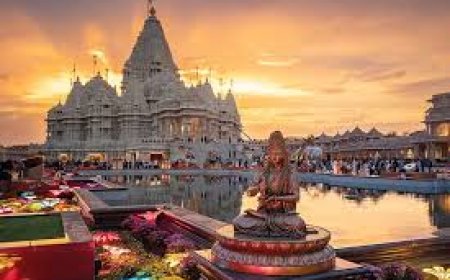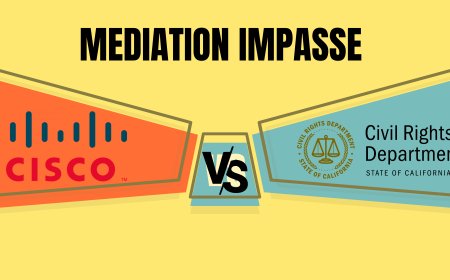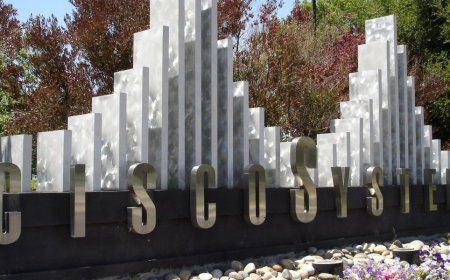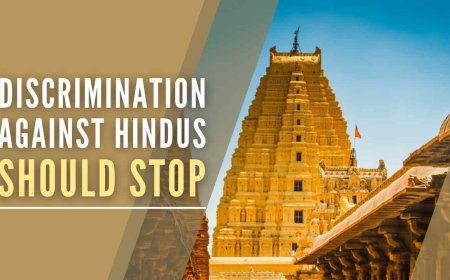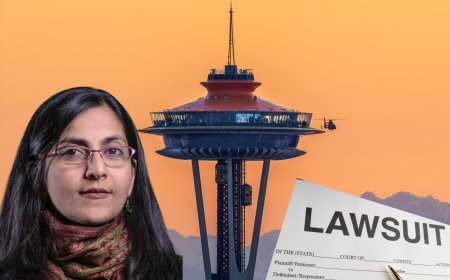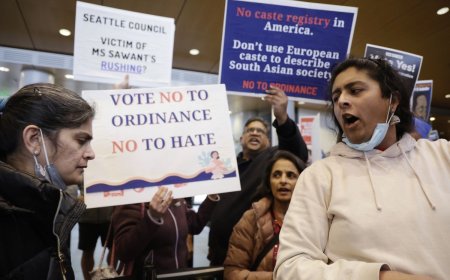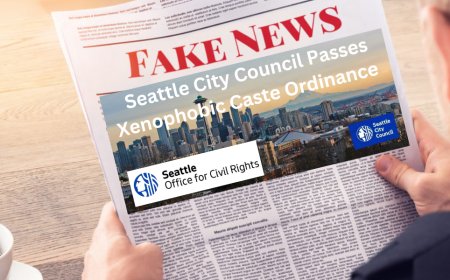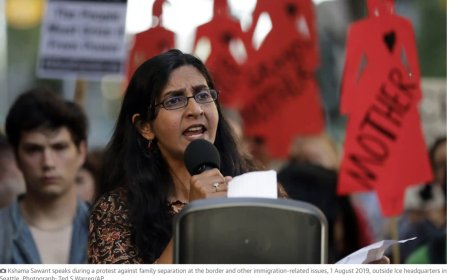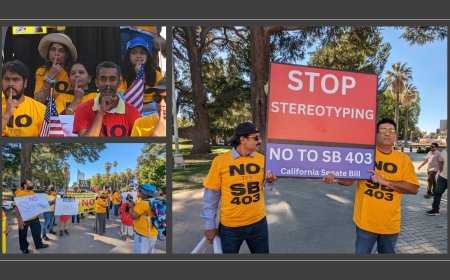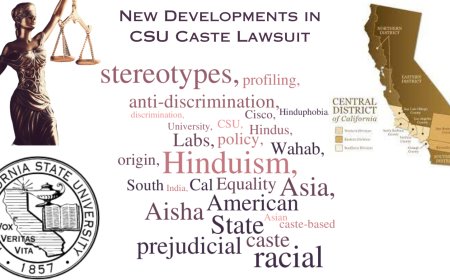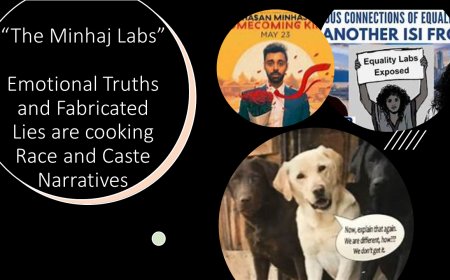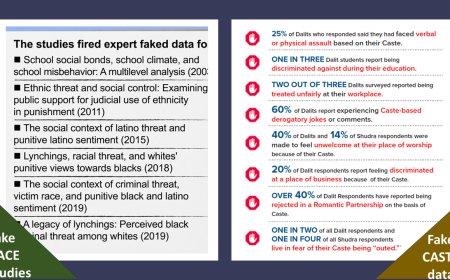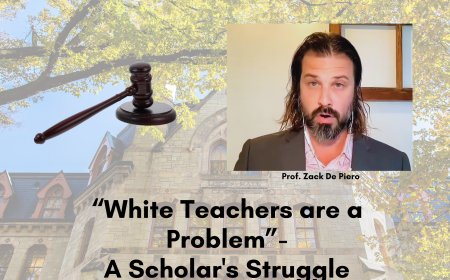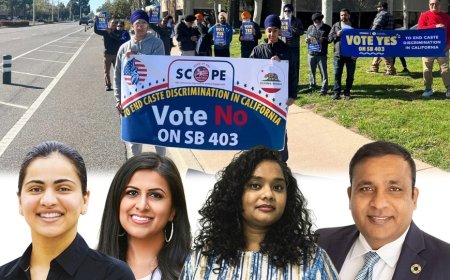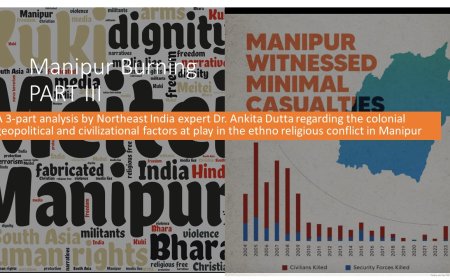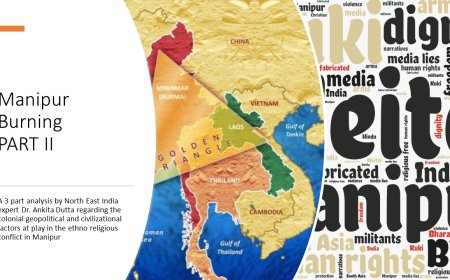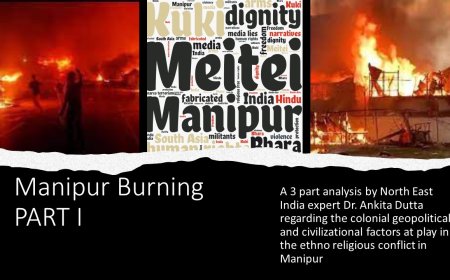Manipur Violence: A Separate Kuki-Zomi Homeland in the Making?—Part III of a Three-Part Academic Review

Many of today’s conflicts are seeded in caste, tribe, race, and religious identities that helped the "divide et impera" (divide and conquer) colonialists—Northeast India expert, Dr. Ankita Dutta discusses this in a three-part series. The three-part series covers: 1. The Reality Behind Manipur Violence and Land Capture, 2. Narco Terrorism and Illegal immigration, 3. Separatist Movement by Kukis, and Kuki homeland in the making.
Known by several other names such as Zoram, Zale’n-gam or ‘The Land of Freedom’, etc. the political imagination of a separate Kuki-Zomi homeland with a concrete territory date back to the late 1980s and the early 1990s when the first and the largest of all the Kuki-Zomi insurgent groups – the Kuki National Organization (KNO) – came into being. The demand has surfaced periodically ever since. The recent violence has seen the resurfacing of the demand for a separate Kuki administration. The idea of a separate Kuki-Zomi homeland emerges from the belief that the hill areas of Manipur, adjoining Mizoram and Myanmar, is inhabited by the Zo community who share affinity of ancestry with the Mizos.
The recent declaration by the 10 Kuki MLAs of Manipur for a separate administrative arrangement and their demand for separation from Manipur is nothing but a step forward in somehow realizing their separate political aspiration of a Christian Zo nation and establishment of Mizo hegemony. ‘Zale’n-gam’ is a defined territory passing through Manipur, Nagaland, Mizoram, Assam, Bangladesh, and Myanmar. Various Kuki civil society organizations and their armed outfits claim 12,958 sq. km, which is more than 60% of Manipur’s 22,000 sq. km area to be incorporated in the separate Christian Zo nation or ‘Greater Mizoram’.
This region encompasses the Sadar Hills area surrounding the Imphal Valley on three sides, the Kuki-dominated district of Churachandpur, Chandel district (having a mix of Kuki and Naga populations), and even a few parts of the Naga-dominated Tamenglong and Ukhrul districts. The entire state of Mizoram is also included as a part of this imaginary Kuki-Zomi homeland. Besides, they even aspire to include the Chittagong Hill Tracts of Bangladesh, and the Chin and Sagaing Divisions of Myanmar. But the right to freedom and self-determination cannot be gained by scuttling the rights and freedoms of other communities.
As per to the Kuki-Zomi separate homeland narrative, those areas of the North-East inhabited by the Kuki-Chin-Zo community are not yet a part of India. Hence, unlike the Naga demand for a separate country of Nagalim, the Kukis have sought a separate state for themselves within the Indian Union. In 2012, influenced by the demand for a separate state of Telangana, an organization called the Kuki State Demand Committee (KSDC) was formed, which soon led the movement for a separate Kukiland in the North-East. In Manipur, strikes and economic blockades are regularly being declared by the KSDC with the objective of harassing common Hindus by not permitting goods to enter the Imphal Valley.
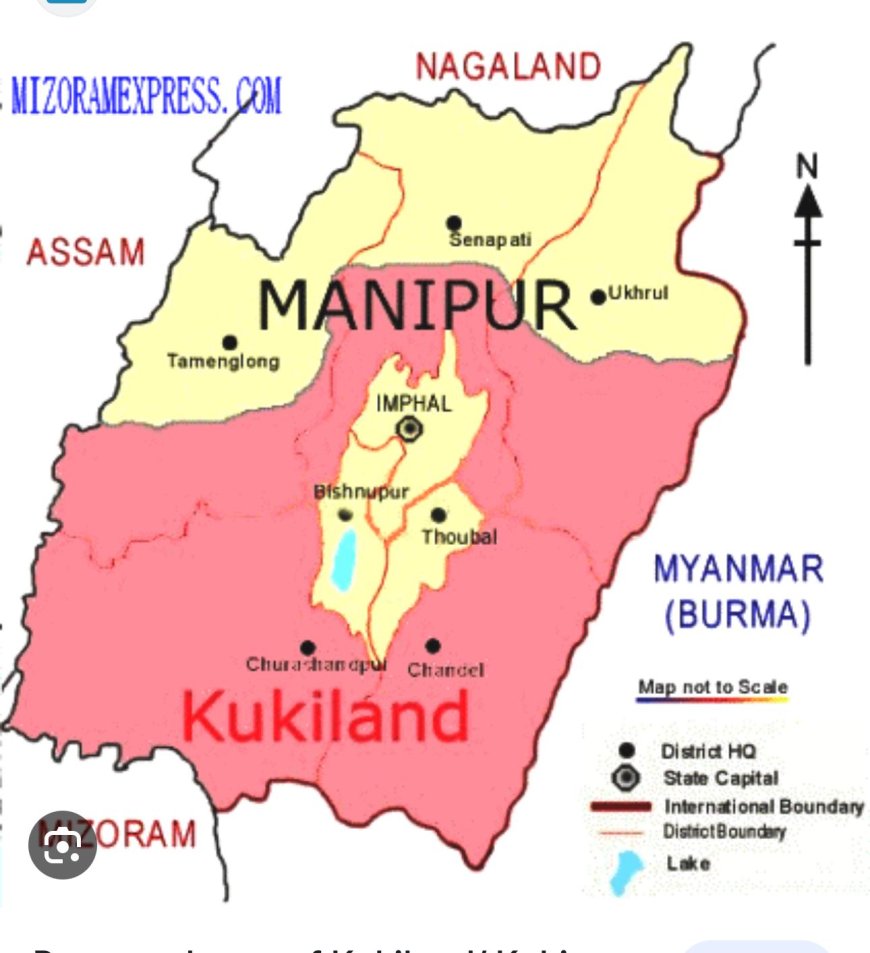
Kuki Militancy and the SoO Agreement
The unregulated influx of Kukis from Myanmar to Manipur and other states of the North-East stinks of a devious plan to divide and destabilize Bharat. Historically speaking, the Kukis have been the main perpetrators of several conflicts in Manipur earlier as well. Ethnic cleansing of the Nagas and the Tamil Hindus from the Indo-Myanmar border town of Moreh in the year 1995 was a pre-planned agenda of the Kukis, all with the objective of increasing their presence in the area, both socio-politically and culturally. After the fierce Kuki-Naga feuds of the early 1990s, the Kukis took over control of Moreh and forced the Nagas out.
Earlier, the Nagas dominated many parts of the highway that connects Moreh with Imphal, but today there is hardly any Naga population left in Moreh. The Tamils of Moreh have been the victims of extortion in the hands of the Kuki militants belonging to the Kuki National Army (KNA). In 1995, the Kukis kidnapped a Tamil businessman from Moreh and held him hostage in the nearby village of Chang Vangphei. The trader was eventually killed because the Tamils refused to pay the tax. This sparked off bloody riots between the Tamil Hindus and the Christian Kukis. But the Kukis found that the Tamils, who were in possession of arms for their personal safety, could not be so easily made to accept their demands.
So, peace prevailed and the KNA was compelled to cut down on its extortion-related activities in Moreh. In other parts of the North-East too, unabated immigration of the Kuki-Chins from Myanmar has led to the ethnic cleansing of several native communities from many areas. The Jampui Hills District of North Tripura is a very good example of this. The area has become Christian majority at present primarily because of illegal immigration, leading the original settlers, i.e., the Hindu Reangs, Chakmas, and Hajongs, to move out to other safer Hindu-dominated locations. A temple of Mahadev situated at a place called Behling Shiv in the Jampui Hills was destroyed by Christian Mizo and Kuki groups in the year 1997.
Behling Shiv was renamed as Betlingchhip with the objective of whitewashing the glorious Hindu cultural and civilizational heritage of this area and thereby re-write its history in due course of time. British records (specifically The Imperial Gazeteer of India: Volume IV by William Winson Hunter) have clearly mentioned the name of this place as Betling Sib. Sibraikhong, the highest mountain peak of Tripura, derives its name from Sibrai – considered to be the supreme Devata of the Reangs equated with Shiva. After the destruction of the Shiva temple, Christians had planted crosses in different places of the sacred Jampui Hills area and renamed the Sibraikhong peak as Thaidawr Tlang.
In Manipur, the Meiteis have always been on the losing side. The Christian tribal population of Manipur is taking advantage of the increasing isolation of the Meiteis by torturing them in whatever way they can. The ambitious Imphal-Jiribam Railway Project consisting of a total 11 major and 137 minor bridges is a very good example of this. The Project has its own economic and strategic significance for not just the North-East but the rest of Bharat too. It will help India in its defense and military operations to counter the influence of China over Myanmar and the South-East Asian continent. The larger objective behind this Project is to connect all state capitals of India with the North-East.
However, the construction work has been frequently disturbed by the presence of Church-funded militant outfits in the region. Many engineers involved in this Project have been shot, kidnapped and killed by unknown miscreants. Militancy is a major security concern for the site engineers in the form of frequent threat calls and messages, attacks, firing, and kidnapping for ransom. Outsiders visiting the area are provided armed escorts and always advised to move in groups. As a result of these and several other such criminal cases of abduction of railway workers, supervisors, and engineers from the project sites, panicked workers flee these places to return as and when adequate security cover is being provided to them.
It may be recalled here that 25 Kuki militant organizations had signed a tripartite Suspension of Operations (SoO) Agreement with the Government of Manipur on August 22, 2008, so as to initiate talks and negotiations for peace. These 25 militant outfits function under two umbrella groups – 17 under the Kuki National Organization (KNO), and 8 under the United People’s Front (UPF). As per the SoO Agreement, both the security forces and the insurgent groups are not supposed to launch any armed operation against each other. The SoO groups are required to abide by the Indian Constitution and the laws of the land by not resorting to any form of extortion or atrocities, besides accepting Manipur’s territorial integrity.
The militants are confined in designated camps and given a financial stipend of Rs. 6,000/- per month from taxpayers’ money. Financial assistance is also provided to maintain these camps. The arms of the rebel groups are deposited in a safe room under a double-locking system. The weapons are to be used only within the camp premises for strictly defensive purposes. While one of the keys remains with the militants, the other one is kept in the custody of the Army. The groups are provided arms only for the purpose of guarding their camps and protecting their leaders. But the recent spate of violence in Manipur has proven that the Kuki terrorists have violated every single term and condition of the SoO Agreement.
While the period of the SoO Agreement is one year, it is extendable depending upon the progress of the talks. A Joint Monitoring Group, with representatives from all the signatories, oversees its effective implementation. Although the State Government of Manipur had withdrawn the SoO Agreement with two groups – the Kuki National Army (KNA) and the Zomi Revolutionary Army (ZRA) – on March 10, 2023, alleging that they were influencing the agitation among illegal land encroachers, it continues to be operational with the other remaining groups. However, the demand has now come up for the immediate withdrawal of this Agreement with these groups as well.
Possible Solutions
Without wasting further time, the Government must complete border fencing along the India-Myanmar international border in Churachandpur district so that the cross-border movement of Myanmarese nationals can be strictly regulated. This can be done through proper dialogue, discussions and negotiations between the Government of India and the Government of Myanmar. In this regard, a well-chalked out policy on refugees also needs to be formulated, and designated camps must be enacted to settle them. Political instability, ethnic conflict, or any form of livelihood or economic crisis cannot be a ground for the justification of illegal immigration of people from one country to another.
Assam is a very good example of how areas which undergo a massive demographic change because of illegal cross-border immigration also subsequently become witness to violent conflicts, increasing rates of crime, and other illegal activities. Hence, just like in Assam, an error-free National Register of Citizens (NRC) has become the need of the hour to detect Myanmarese nationals residing illegally in the state of Manipur. In order to confirm the legal validity of the documents that have already been procured by them to prove their Indian citizenship, a special drive can be started by the Government with the assistance and cooperation of various local organizations of the Meiteis and the Nagas.
Who helps these migrants cross over the border? Those people are the main culprits who should be immediately brought to the book. Narco-terrorism, including drug trafficking and poppy cultivation, and its role in the ongoing violence cannot be overlooked. In this regard, it is also very much necessary that the Government of India under the Union Home Ministry abrogates the Suspension of Operations (SoO) pact with the Kuki militant outfits, because this pact permitted our security forces to put an end to their counter-insurgency operations against the militants. So, the militants are now to be seen roaming around freely with arms, inflicting violence upon ordinary citizens.
This is a very important factor behind the recurring episodes of violence in Manipur. Earlier, the Security Advisor to the Government of Manipur had himself confirmed in an official press meet about the violations of the rules of the SoO Agreement. Just a few days back from today, on June 8, the Meira Paibi (Women’s Association of Manipur) took out a massive torch rally across the Imphal Valley demanding the abrogation of the SoO Agreement with Kuki militant groups and immediate withdrawal of the Assam Rifles from Manipur. Slogans such as ‘Long Live Manipur’, ‘Withdraw SoO Agreement’, ‘Save Manipur’s Territorial Integrity’, etc., were raised during the rally at various locations in the Valley.
The Government’s measures to reclaim looted arms and ammunition from different places of Manipur have not yet been very fruitful. It still remains to be seen what steps are being undertaken by the Government to ensure that these arms are soon recovered and returned. Further, land laws in Manipur with respect to the hill and the valley areas must be framed keeping in mind the best interests of all the three communities, i.e., the Meiteis, the Nagas, and the Kukis, without compromising upon equal access and ownership. In this regard, it is very important that the Manipur Land Revenue and Land Reforms Act of 1960 is revisited.
Lastly, it is important to create awareness in the rest of India about the complexities of the North-Eastern region as a whole and the major problem afflicting this region for a long time now, i.e., the continuous decline of the Hindu population. Because whatever is happening in Manipur today is just a repetition of what happened/is happening in Nagaland, Mizoram, and even Meghalaya to a large extent. It can be the fate of nearly all the other remaining North-Eastern states unless the Indian state addresses the sensitive issue of religious conversions and the accompanying socio-religious and demographic changes from a Dharmic perspective.
The Meitei Hindus have been the victims of gross discrimination in their own lands, all because they never chose to abandon Dharma. Besides Assam and Tripura and Arunachal Pradesh to an extent, Manipur is the only other state in the North-East where Hindu Dharma still survives. Every aspect of Manipur’s rich cultural heritage from Manipuri cuisine to Manipuri dance, music and art forms signifies the basic foundational principles and belief systems of the Meiteis that are inseparably associated with Hindu Dharma. Constitutionally speaking, Indian laws, the Government, and the administration must treat everyone equally irrespective of their religious backgrounds.
But this isn’t the scenario at present, thereby making the residents of a particular state believe that they are not all the same and hence, some deserve more rights than the rest who will forever have to live as second-class citizens in their own homeland. It doesn’t even matter for how long they have been living in that particular place. A debate also needs to be initiated on the question – ‘Who really are the Minorities in North-East India’? Hindus do not stand at an equal pedestal with non-Hindus, because the Constitution of India and as well as various other laws, rules and regulations are clear in this regard. Every time a conflict erupts in the North-East, this difference becomes starkly manifest.
From the Inner Line Permit (ILP) System to Article 371 of the Constitution, an inherent anti-Hindu bias is clearly visible with respect to the different laws and policies implemented in the North-East from time to time. This is evident from the pathetic condition of the Reangs and the Chakmas who resisted conversions and thus had to flee from their original homeland in Mizoram at the peak of the Mizo insurgency. Several families among these communities are still living as refugees in a few remote villages along the Tripura-Mizoram border. Isn’t it ironic that in their own land Bharatvarsha Hindus are the most discriminated against among all other religious communities?
Acknowledgements: My sincere note of gratitude to Vladimir for being a pillar of support. Thanks to all the people of Manipuri Basti, Guwahati for being a source of strength in my study on this sensitive subject. I owe you all.
Follow Caste Files on Twitter @CasteFiles

